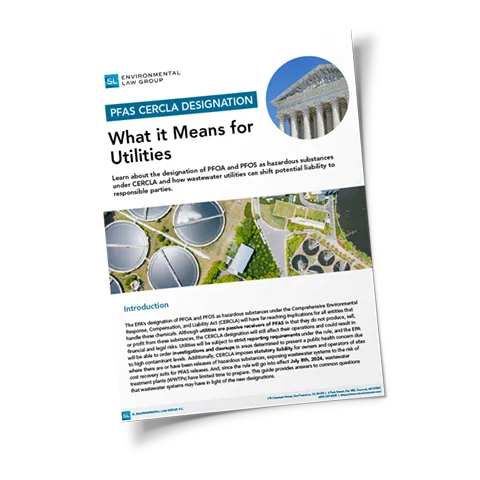
What WWTPs Need to Know About CERCLA
The EPA has designated PFOA and PFOS as hazardous substances under CERCLA, resulting in far-reaching implications for all entities that handle these chemicals. Although utilities are passive receivers of PFAS, as they do not produce, sell, or profit from these substances, the CERCLA designation still affects their operations and could result in financial and legal risks. Utilities are subject to strict and sometimes confusing requirements.
To further inform WWTPs about the implications of the CERCLA designation, we've created this guide, providing answers to common questions that we have received from wastewater systems, particularly in light of the EPA reaffirming the ruling as of September 2025. With a clear understanding of the rule, you can reduce financial risks by shifting potential liability to polluting manufacturers.